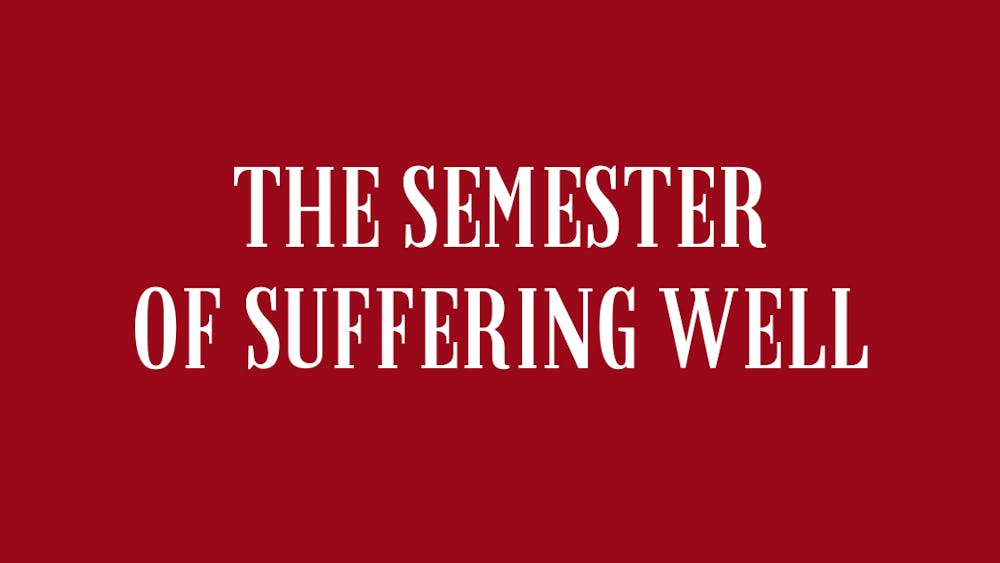According to the Catechism of the Catholic Church, punishment for a crime “in addition to defending public order and protecting people’s safety, has a medicinal purpose: As far as possible, it must contribute to the correction of the guilty party.” In 1980, 32 percent of Americans agreed that the primary purpose of prison was to rehabilitate, not punish; by 1993, 61 percent of Americans felt that prison was a place strictly for punishment. This shift in opinion has filled our prisons with repeat offenders, wasted taxpayers’ money, perpetuated racial discrimination, and, above all, harmed our communities. The time to shift the model of our justice system is now.
Notre Dame for Restorative Justice suggests the remedy of restorative justice. The theory of restorative justice addresses the needs of the victim, the community and the offenders. While we tend to think first of the needs of the victims and communities that have been harmed, restorative justice reminds us that most offenders have needs as well. To quote Howard Zehr, the pioneer of American restorative justice, “If we are to expect [offenders] to assume their responsibilities, to change their behavior, to become contributing members of our communities, restorative justice assumes that these needs must be addressed as well.” One key tenet of restorative justice is that “crime is to be viewed as a violation of the individual, rather than just as an offence against the State.” This region of Indiana is already well-versed in restorative justice, as the Center for Community Justice in Elkhart launched the first Victim Offender Reconciliation Program (VORP) in the United States. We have personally seen and experienced restorative justice in practice in South Bend through Talking Circles at Rise Up Academy, Reading For Life (a program that has recently received attention from the White House and Catholic Charities) and through spending time at Dismas House, the transitional housing program here in South Bend for individuals recently released from incarceration. In addition to our shared humanity that necessitates a more compassionate justice system, the financial dimension of the current justice system demands reform, as our retributive approach is expensive for the community and the taxpayer. The state of Indiana pays tremendous daily costs for juveniles and adults incarcerated in the justice system. Alternatively, restorative justice programs, while sometimes expensive to put in place, ensure lower recidivism rates and long-term cost effectiveness. Ultimately it is better to invest in community-based initiatives and legislation that focus on the respect and dignity of each person involved in a crime, such as the Second Chance Act and the Sentencing Reform Act. While small-scale restorative justice programs do exist throughout Indiana, we are nowhere close to being able to implement them statewide. Engaging the humanity of every individual and encouraging an atmosphere of love in the face of hate is necessary, but changing our laws incrementally is also required in order to enable an environment in which restorative justice could be widespread. The Second Chance Reauthorization Act and the Sentencing Reform and Corrections Act of 2015 are Congress bills on the docket that could direct the legislative environment and public opinion towards a more humane, cost-effective approach to justice. The Second Chance Act strengthens reentry programs ranging from job training to substance abuse treatment and provides opportunities for behavioral change that would otherwise not be available in the event of incarceration. The Sentencing Reform and Corrections Act repairs the mandatory minimum sentences for prior drug felons, gives judges flexibility, broadens prison-based reentry programs and limits solitary confinement for juveniles. These bills encourage our government to invest in community-based initiatives, such as Dismas House, that seek to break the cycle of crime for the benefit of both the individual and that of society. As an advocacy group through the Center for Social Concerns, ND for Restorative Justice has reached out to the South Bend community to understand how these Senate bills, if passed, would impact the local community. Both state institutions and local initiatives are affected by the justice system in St. Joseph County, and all those to whom we have reached out fully support these two bills. Restorative justice, in general, has the backing of groups such as the U.S. Catholic Council of Bishops. In their 2000 document “Responsibility, Rehabilitation, And Restoration: A Catholic Perspective on Crime and Criminal Justice,” the council wrote, “A Catholic approach leads us to encourage models of restorative justice that seek to address crime in terms of the harm done to victims and communities, not simply as a violation of law.” Are you willing to stand with ND for Restorative Justice in supporting the Second Chance and the Sentencing Reform Acts in hopes of laying the groundwork for a restorative justice system? We will be communicating their urgency at a meeting with the office of U.S. Sen. Joe Donnelly of Indiana later this week; you can sign our petition to take an active step in making restorative justice a reality in South Bend. Peace,Evelyn Bauman
senior
Sofia Piecuch
senior, Saint Mary’s College
Seamus Ronan
senior
Adrianna Duggan
sophomore
Kelsey Feldmeier sophomore












